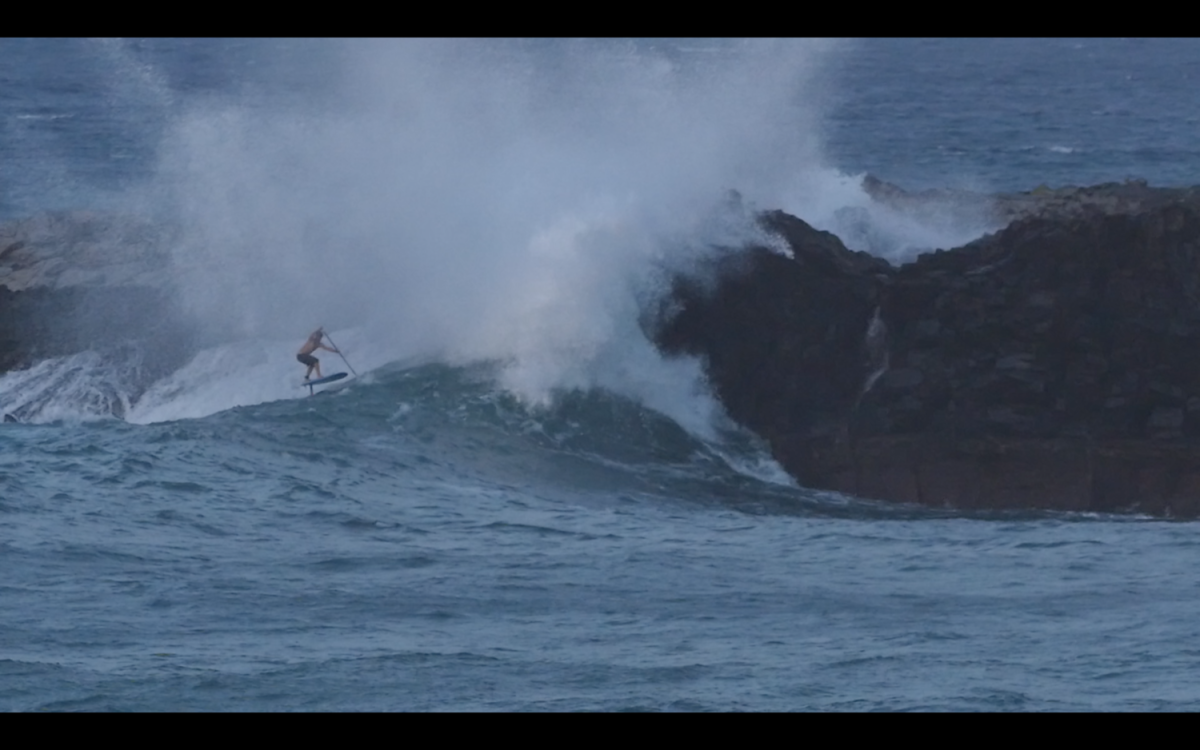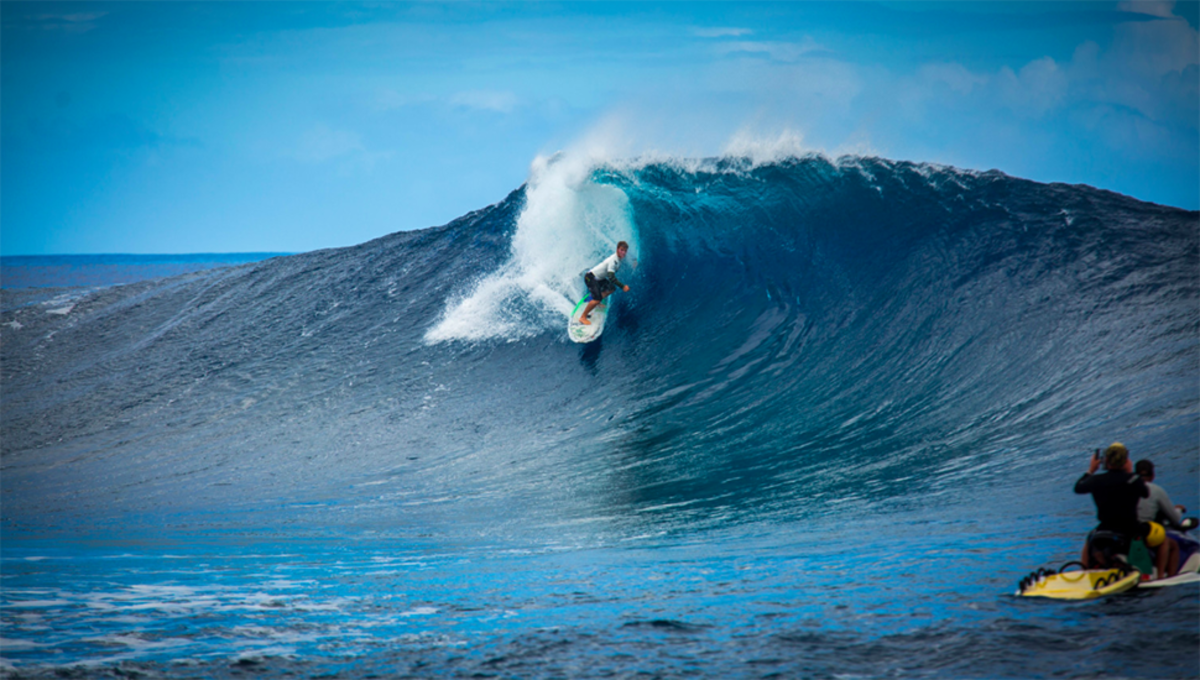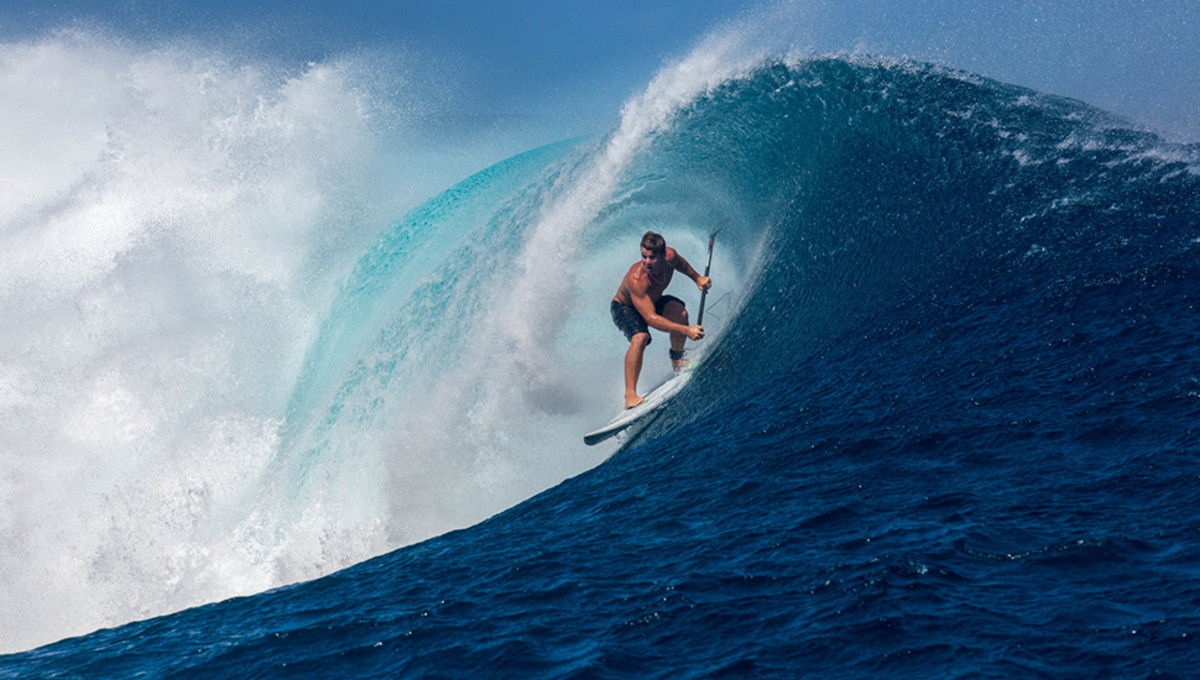Professional SUP surfer Zane Schweitzer is no stranger to trying conditions on the water. Born and raised on Maui, Schweitzer grew up surfing, windsurfing, and standup paddling. Although the 26-year-old has surfed some of the most intimidating waves on the planet, he recognizes that it’s important to prioritize safety in every situation and that everyone has different limits.
While your definition of “big” may be vastly different than Schweitzer’s, the skills, techniques, and safety practices needed for a successful session are essentially the same. We caught up with Schweitzer and got some of his top tips for staying safe in big surf and how to not only survive, but thrive, in the impact zone.

What safety considerations do you take when SUP surfing in bigger surf?
In bigger surf or conditions that are more strong/serious, it’s always a good idea to take extra time with your hazard assessment.
This means taking a moment to be present in our environment and become aware of any elements around us that may help or hinder our time on the water. Things like finding a safe place to enter and exit the water, being aware of the areas over the reef that the waves break most consistently, and understanding the wind and current direction should all be taken note of before entering the water.
It’s also important to bring that hazard assessment over to our equipment check and make sure fin screws are tight and your leash and leash string are solid with no nicks. After taking the time to assess your equipment and conditions on the water, assess yourself—breathe, stretch, have a game plan, and stick to it. If in doubt, don’t go out.
What’s some advice you can offer for paddling out through heavy surf?
Getting out through heavier surf can be a challenge. A lot of the time, successfully getting out simply takes preparation to find a safe and efficient place to enter the water—ideally with a rip current or channel. You don’t want to be wasting energy going one after another. When you feel that you’re getting stuck in one of these cycles, I find it best just to swim and allow the board to drag behind you until the waves settle down to a lull. Waves aren’t coming in a random order; there is always a frequency you can get familiar with. Going with the flow of the current and energy that is being sent with the waves is key.
Getting up and over a whitewash starts with approaching the wave with perpendicular speed, then stepping back with your foundation foot into your surf stance and planting one paddle stroke at the bottom of the wave while lifting the nose up over the whitewash, followed by a quick stroke to the top of the wave paddling yourself up and over. If I don’t feel confident to make it up and over the whitewash, I will strategically launch my board up and over while avoiding a collision with it when I dive off. When done properly, this allows for the board to go up and over the wave and be pointing back out to the ocean.

What do you do when you get stuck in the impact zone?
When stuck in the impact zone, it is most important to stay calm. Do your best to go with the flow and avoid wasting energy by trying to get on your board without enough time. Instead, it’s best to swim and let the leash do the work for you—relax and let the board pull you until there is a break in the surf or until you have been pushed to a safer place.
Another tip for when you are being pulled underwater is to relax your body, allow the board to pull you with momentum under the water, and then reach your bottom hand down the paddle as your top hand is on the handle pushing up. This creates somewhat of a hydrofoil effect—as the paddle pushes down, mixed with the momentum that the wave is pulling you in with, this motion rises you to the surface. More than anything, it is important to keep your cool, don’t panic, and put your mind in a happy place. Seconds later, you will be up.

How do you prepare for long hold-downs?
I do yoga and breathing work daily, along with my standup paddle training, which involves a lot of cardio and endurance. This combination of daily exercise is great for lung apnea and controlling the cardiovascular system and oxygen burning efficiency. More than anything, it’s this preparation that makes you feel confident when underwater—with preparation comes confidence and with confidence comes calm.

Do a lot of the skills and safety techniques you use in big surf apply to smaller surf as well?
Most definitely! These preparation strategies and training techniques for big surf can be applied to any day and any sport on the water. Being more confident in your strength, flexibility, breath hold, and ability to read the ocean and conditions around you more promptly are all things that add to the amount of time and the amount of fun we can spend on (or under) the water.
from Men's Journal https://ift.tt/2OsPxwH
via IFTTT








0 comments:
Post a Comment